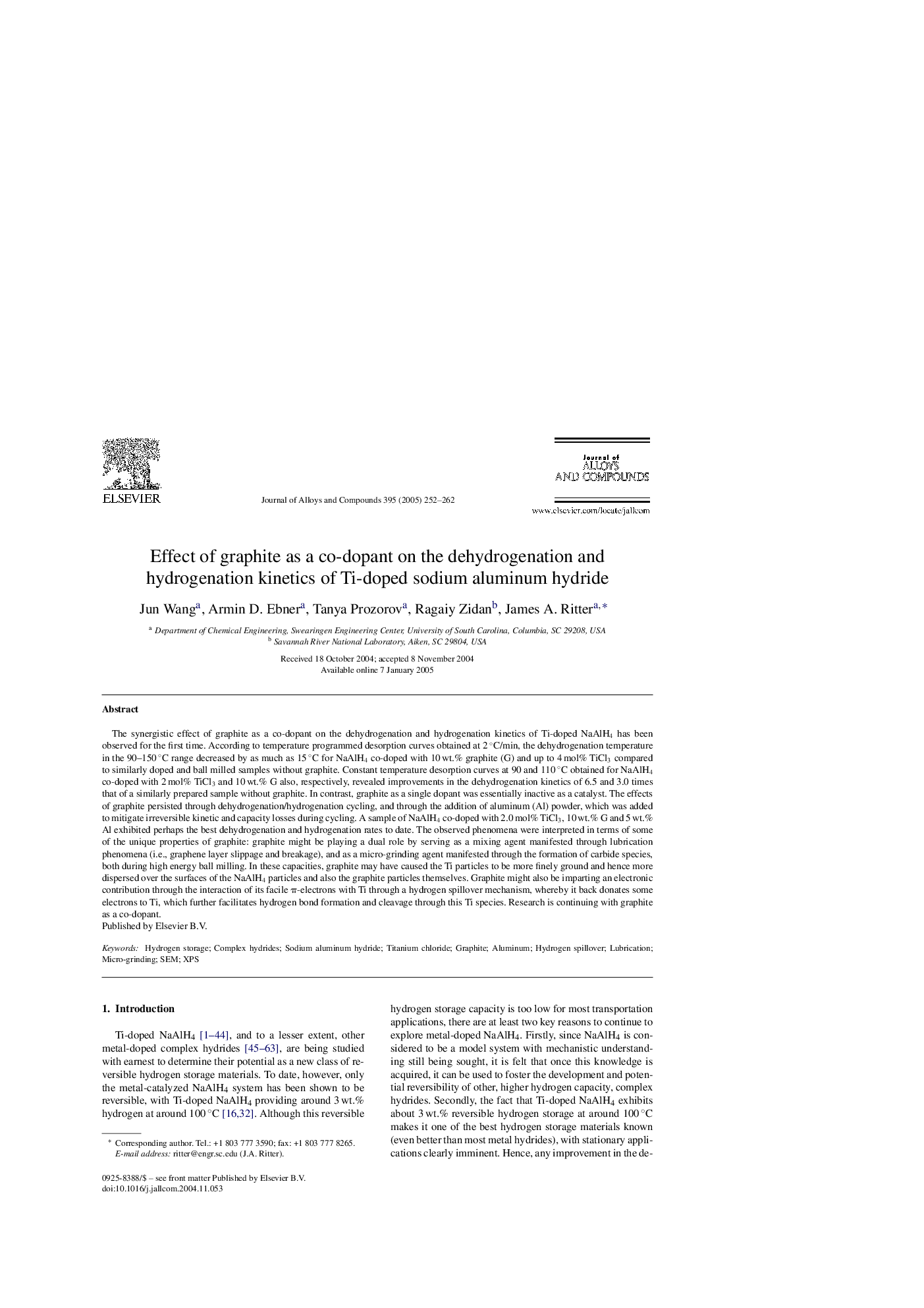| Article ID | Journal | Published Year | Pages | File Type |
|---|---|---|---|---|
| 9803755 | Journal of Alloys and Compounds | 2005 | 11 Pages |
Abstract
The synergistic effect of graphite as a co-dopant on the dehydrogenation and hydrogenation kinetics of Ti-doped NaAlH4 has been observed for the first time. According to temperature programmed desorption curves obtained at 2 °C/min, the dehydrogenation temperature in the 90-150 °C range decreased by as much as 15 °C for NaAlH4 co-doped with 10 wt.% graphite (G) and up to 4 mol% TiCl3 compared to similarly doped and ball milled samples without graphite. Constant temperature desorption curves at 90 and 110 °C obtained for NaAlH4 co-doped with 2 mol% TiCl3 and 10 wt.% G also, respectively, revealed improvements in the dehydrogenation kinetics of 6.5 and 3.0 times that of a similarly prepared sample without graphite. In contrast, graphite as a single dopant was essentially inactive as a catalyst. The effects of graphite persisted through dehydrogenation/hydrogenation cycling, and through the addition of aluminum (Al) powder, which was added to mitigate irreversible kinetic and capacity losses during cycling. A sample of NaAlH4 co-doped with 2.0 mol% TiCl3, 10 wt.% G and 5 wt.% Al exhibited perhaps the best dehydrogenation and hydrogenation rates to date. The observed phenomena were interpreted in terms of some of the unique properties of graphite: graphite might be playing a dual role by serving as a mixing agent manifested through lubrication phenomena (i.e., graphene layer slippage and breakage), and as a micro-grinding agent manifested through the formation of carbide species, both during high energy ball milling. In these capacities, graphite may have caused the Ti particles to be more finely ground and hence more dispersed over the surfaces of the NaAlH4 particles and also the graphite particles themselves. Graphite might also be imparting an electronic contribution through the interaction of its facile Ï-electrons with Ti through a hydrogen spillover mechanism, whereby it back donates some electrons to Ti, which further facilitates hydrogen bond formation and cleavage through this Ti species. Research is continuing with graphite as a co-dopant.
Keywords
Related Topics
Physical Sciences and Engineering
Materials Science
Metals and Alloys
Authors
Jun Wang, Armin D. Ebner, Tanya Prozorov, Ragaiy Zidan, James A. Ritter,
